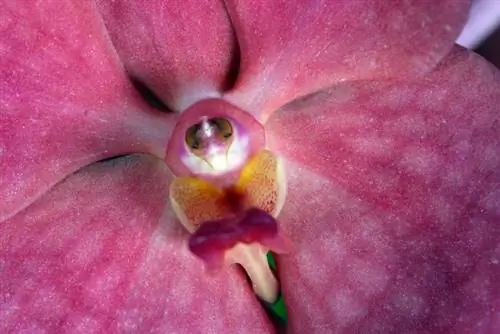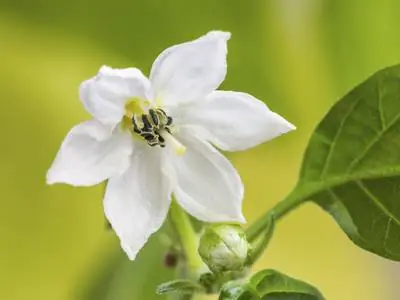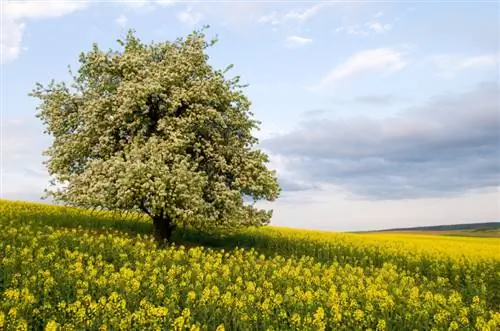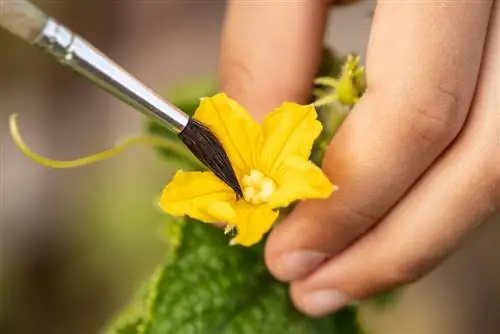- Author admin [email protected].
- Public 2023-12-16 16:46.
- Last modified 2025-01-23 11:20.
Natural pollinators rarely find their way to an orchid flower in our latitudes. To ensure that the tropical plant produces fruits with numerous seeds, you can fertilize the flowers yourself. We explain here how this feat is achieved.
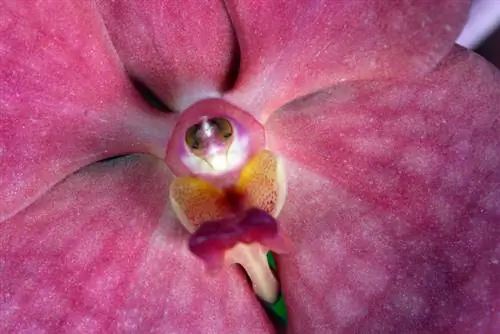
How can you pollinate orchids yourself?
To pollinate orchids manually, you need at least two open, he althy flowers. Carefully remove the anther valve with a toothpick to reveal the golden yellow pollen packets. Transfer the pollen to the other orchid's sticky stigma and observe whether the stigma swells, indicating successful pollination.
These 3 requirements are mandatory
In order for the effort of manual pollination to actually result in rich seed heads, the following requirements should be met:
- The orchids are strong and he althy to cope with the feat
- A single plant has at least 2 open flowers
- The flowers to be pollinated are fully open
You can hope for particularly stable hybrids if you use pollen from 2 orchids of the same species. Transfer the pollen of different species, breed new genus hybrids with an unpredictable result.
Step-by-step instructions for manual pollination
On orchids, the pollen is hidden behind a flap that protects the anther. This anther valve (€6.00 on Amazon) is removed with a toothpick. The pollen packets are now exposed and can be picked up with the toothpick. It is important to note that the pollinia are golden yellow. Dark-colored pollen is no longer fresh enough to fertilize a flower. Follow these steps:
- Pick up the pollen with the tip of the toothpick
- Carefully transferred to the sticky scar of the mother plant
- On mother plants with a flower shoe, first expose the hidden stigma
You have made your contribution to pollination. As the scar closes and swells, the plant signals that the procedure has been successful. Now the flower is fading quickly. The actual fertilization takes place as the pollen moves into the ovary in the following weeks. As a rule, it takes up to 9 months for the seeds to ripen in the fruit.
Tip
The pollination of an orchid flower by itself has no chance of success. With a few exceptions, plants have developed a protective mechanism against this form of floral inbreeding. If you fertilize an orchid in this way, empty fruit without seeds will thrive.

